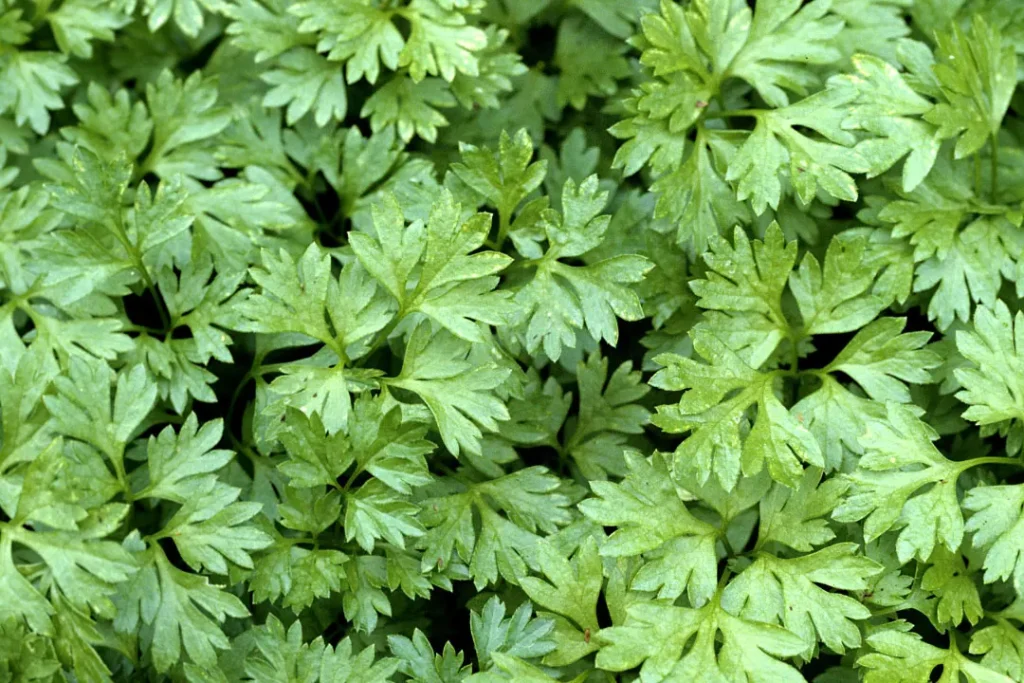The potential health benefits of natural supplements have attracted increasing attention in recent years. One supplement that has gained the most interest is called chervil (anthriscus cerefolium). This delicate herb has a delicious taste and unique scent, and it derives from the apiaceae family. Chervil is often used in cooking, as it provides a variety of health benefits in addition to being a gourmet treat. This article is an informative piece written to help you further understand the properties of chervil, its health benefits, recommended dose, negative effects, possible drug interactions, and appropriate usage.
You May Also Like:
Capers: Benefits, Dosage, Side Effects, Drug Interactions, and Other Important Information
Canthaxanthin: Benefits, Dosage, Side Effects, Drug Interactions, and Other Important Information
Chervil: Benefits, Dosage, Side Effects, Drug Interactions, and Other Important Information is an original (NootropicsPlanet) article.
Nature of Chervil:
Chervil is indigenous to the Mediterranean area, and it is grown all over the globe. It is distinguished by its tiny white blooms and fern-like foliage. The plant includes a number of natural e substances, including volatile oils, flavonoids, and coumarins. These elements give chervil its distinct flavor, and aroma.
Health Benefits of Chervil:
- Antioxidant Properties: Chervil is full of antioxidants, which help shield your body from oxidative stress and harm from toxins that can get into your body. Chervil contains powerful antioxidants including flavonoids and polyacetylenes that lower the risk of chronic illnesses like cancer, cardiovascular problems, and neurological diseases.
- Inflammatory Properties: Chervil has anti-inflammatory properties because it includes coumarins such as umbelliferone. The inflammation in your body is decreased by these substances because they prevent the synthesis of inflammatory mediators. If you have an inflammatory disease like arthritis or inflammatory bowel disease, this impact could be very beneficial for your health.
- Improved Digestion: : Chervil has historically been used to improve digestion because of its carminative qualities. It can aid in relieving you of symptoms like gas, indigestion, and bloating. Chervil promotes proper digestion by encouraging the release of digestive enzymes.
- Diuretic Qualities: Chervil contains diuretic qualities that increase urine production and make it easier to get rid of waste from your body. This diuretic property can support renal health maintenance and water retention reduction.

Chemistry of Chervil:
Substances and their Functions
Chervil (anthriscus cerefolium) is a plant that has a unique taste and many natural chemicals that can have positive health benefits. . Chervil’s chemical composition can provide insight into its physiological properties and purpose. . The main substances included in chervil are volatile oils, polyacetylenes, coumarins, and flavonoids.
- Flavonoids: A class of polyphenolic substances known as flavonoids are commonly present in the plant world. Many flavonoids, including apigenin, luteolin, and quercetin, can be found in chervil. The antioxidant properties of the plant are a result of these constituents. Flavonoids work to combat reactive oxygen species and shield your cells from oxidative damage. By preventing your body from producing pro-inflammatory mediators, they also have anti-inflammatory capabilities.
- Coumarins: Umbelliferone and herniarin are only a few of the many coumarins found in Chervil. The herb’s scent is mostly attributed to coumarins, which are aromatic substances. These substances have been linked to many biological processes, such as anti-inflammatory, anti-oxidant, and antibacterial properties. Coumarins can also have anti-coagulant qualities that might affect the way your blood clots.
- Polyacetylenes: The chemical molecules in chervil that give it its distinct flavor and pungency are known as polyacetylenes. Antibacterial and anti-inflammatory properties of these substances have been studied.. Their capacity to prevent the development of bacteria and fungus has been researched, which point to a potential function in fostering microbial balance, and enhancing immunological health.
- Volatile Oils: Chervil contains volatile oils, commonly known as essential oils, which give it its distinctive scent. Terpenes and phenylpropanoids are among the volatile substances that make up these oils. Chervil’s volatile oils contribute to its overall taste and can have extra health benefits. Chervil has numerous volatile chemicals that have been researched for their antibacterial and antioxidant effects.

Physiological Properties of Chervil::
There hasn’t been much research into the precise physiological effects through which chervil affects our body and brain. However, the pharmacological properties of some of its natural e components have been studied. For instance, it has been shown that flavonoids scavenge negative toxins , suppress inflammatory pathways, and alter enzymatic activity. Contrarily, coumarins have anti-inflammatory and antioxidant properties. These elements probably play a role in chervil’s general health benefits. Chervil is a promising complement to a living a healthy lifestyle. Chervil seems to have antioxidant, anti-inflammatory, digestive, and diuretic qualities, while further study is required to determine precise dose guidelines and understand its purpose in our health.
Chervil should be used with caution, with keeping in mind any possible side effects and drug combinations. Before beginning chervil supplementation, like with any dietary supplement, we strongly advise you to speak with a healthcare provider first, especially if you have any underlying medical concerns or are taking other medicines.
Chervil can be a pleasant and advantageous supplement to add to your diet, and it can enhance your overall general health and well-being.

Optimal Dosage of Chervil:
Chervil must be used safely and effectively, and finding the ideal dose is essential. It is important to note that there is still little scientific study on what chervil dose is currently accessible. The recommended dosages are not well established. However, we advise you to start with a small dosage, and progressively increase it as necessary. . Chervil is often used as a dietary supplement in the form of teas, tinctures, or capsules. It is important to adhere to the manufacturer’s recommendations or speak with your healthcare provider for advice on what is the proper dosage you should take.
Side Effects of Chervil:
When used as a culinary herb or nutritional supplement in moderation, chervil is regarded as safe for consumption.However, it can cause allergic responses , especially if you are hypersensitive to other apiaceae plants like carrots, celery, or parsley. Skin rashes, itching, or respiratory difficulties are some examples of chrvil’s allergic response symptoms. We strongly reccomend for you to stop using it and get medical help if any of these negative side effects happen to you.

Substance Interactions with Chervil:
The effectiveness and safety of several drugs can be impacted by interactions with chervil. Chervil can have anticoagulant qualities, so if you are taking anticoagulant drugs like warfarin, you should use caution while using it. Additionally, sedatives or drugs with sedative qualities can also be enhanced by chervil. Before using chervil, we advise you to speak with your medical professional if you are on any drugs or have any underlying health issues.
Best Responsible Use of Chervil:
To optimize the chervil’s health advantages and reduce any possible hazards, it is crucial to utilize it responsibly while adding it into your routine (Anthriscus cerefolium). The following suggestions and rules are for the appropriate usage of chervil:
- Quality and Sourcing: It is crucial to pick chervil of the highest quality from reliable suppliers. This guarantees that the product you recieve has been handled carefully to preserve its components and effectiveness, and to ensure that it is free of impurities.
- Dosage and Use: Make sure you use the product according to the manufacturer’s dosage recommendations, or seek advice from your healthcare provider. Chervil may be purchased in numerous different forms, including dry herb, teas, tinctures, and capsules. In cooking, it can also be utilized right away. Start slowly and build up gradually, while paying attention to how your body reacts.
- Allergies and Sensitivities: Be cautious while using chervil if you have any allergies or sensitivities to other plants in the apiaceae family, such as carrots, celery, or parsley. Chervil can also cause allergic responses. Stop using it immediately and seek medical help if you suffer from any negative side effects, like respiratory difficulties, skin rashes, or itching.
- Take Your Health Conditions Into Account: Before using chervil as a dietary supplement, it is crucial to speak with your doctor if you have any underlying medical issues, are expecting or nursing, or are on any drugs. Chervil should only be used in situations where it is safe and suitable since it may interact with certain drugs or impact underlying medical issues.
- Variety and a Balanced Diet: Chervil may be a useful supplement to a diverse and balanced diet. While it can have health advantages, it is crucial to keep in mind that it shouldn’t be used as a replacement for a balanced diet and an active lifestyle. Chervil should be used as part of a comprehensive strategy for health and nutrition.
- Avoid Becoming Dependent on Chervil: Chervil needs to be taken into account as a component of a more comprehensive strategy for using herbs and vitamins. It is best to avoid becoming too dependent on any plant or supplement. When adding nutritional supplements to your regimen, moderation and variety are crucial.
- 7. Individual Responsiveness: Chervil should be used with caution. As with any other dietary supplement, be sure you monitor your body’s reactions. Keep an eye out for any changes in your symptoms, drug interactions, or side effects. Consult your healthcare practitioner if you have any worries or inquiries.

Chervil: Conclusion
Although Chervil is still being researched, it is still proven to be safe and effective, when used in moderation. Especially if you follow reccomendations from its manufacturer and your doctor. Everyone is unique, with certain health needs that are specific only to themselves, so chervil can affect us each in different ways. If you are looking to add a daily natural supplement to your diet that can improve your digestive health, this supplement may be best for you! Be sure to get your doctor’s approval and advice before trying it.
References:
- Effects of adaptogens on the central nervous system and the molecular mechanisms associated with their stress-protective activity. Retrieved from: https://www.mdpi.com/1424-8247/3/1/188
- Chervil: Benefits, Uses, and Side Effects. Retrieved from: https://www.webmd.com/vitamins/ai/ingredientmono-250/chervil
- Phytochemicals and Health Benefits of Chervil (Anthriscus cerefolium). Retrieved from: https://www.sciencedirect.com/topics/agricultural-and-biological-sciences/chervil
Important Note: The information contained in this article is for general informational purposes only, and should not be construed as health or medical advice, nor is it intended to diagnose, prevent, treat, or cure any disease or health condition. Before embarking on any diet, fitness regimen, or program of nutritional supplementation, it is advisable to consult your healthcare professional in order to determine its safety and probable efficacy in terms of your individual state of health.
Regarding Nutritional Supplements Or Other Non-Prescription Health Products: If any nutritional supplements or other non-prescription health products are mentioned in the foregoing article, any claims or statements made about them have not been evaluated by the U.S. Food and Drug Administration, and such nutritional supplements or other health products are not intended to diagnose, treat, cure, or prevent any disease.


